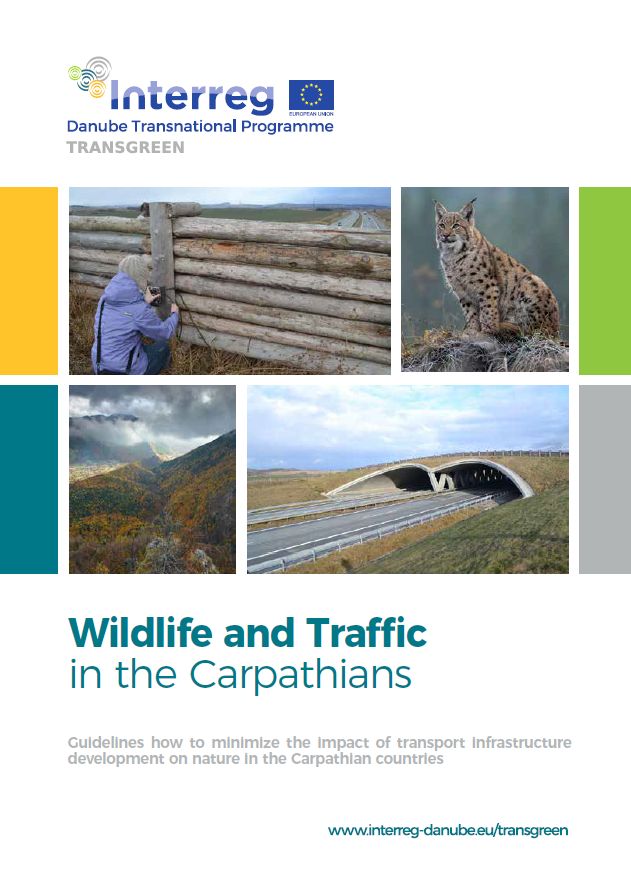
Wildlife and Traffic in the Carpathians
Guidelines on how to minimize the impact of transport infrastructure development on nature in the Carpathian countries
The development of transportation brings extensive impacts on nature and the landscape. Regarding collisions with vehicles, animal mortality is undoubtedly the most visible. However, transportation also brings other issues, less noticeable at first sight. Motorways and other intensively used arterial roads and major railways create impassable barriers for animals. Such barriers then separate the originally continuous distribution areas into smaller and mutually isolated islands that are no longer able to ensure conditions for the long-term survival of populations. This process, called fragmentation of the environment, is ever increasingly becoming a serious threat.
These Guidelines are one of the outcomes of the project ‘Integrated Transport and Green Infrastructure Planning in the Danube-Carpathian Region for the Benefit of People and Nature’ (TRANSGREEN ). This initiative represents a particular step towards fulfilling the goals of the Carpathian Convention Protocol on Sustainable Transport in the Carpathians. It is based on the European COST 341 Handbook (Wildlife and Traffic) on avoiding Habitat Fragmentation due to Linear Transportation Infrastructure and other guidelines and handbooks with special focus and adaptation designed to support ecological connectivity in the Carpathians.
